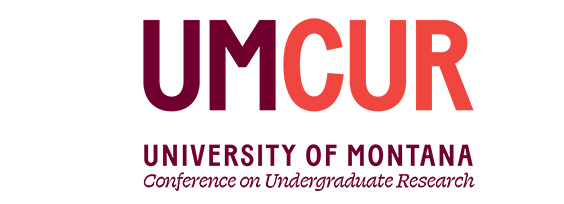Franke Global Leadership Initiative (GLI) Oral Presentations
Bridging the Physical Divide: The Effects of Physical Activity on Mental Health Among Adolescents
Project Type
Presentation
Faculty Mentor’s Full Name
Mark Plonsky
Faculty Mentor’s Department
Adjunct Professor in Theatre Department
Abstract / Artist's Statement
Bridging the Physical Divide: The Effects of Physical Activity on Mental Health Among Adolescents
¹Carly Cushman, ¹Miya Ensley, ¹Olivia R. King, ¹Keeza Leavens, ¹Gavin Mikes, ¹Ashlin Slanger, ¹Haley Yarborough
¹Franke Global Leadership Initiative, University of Montana
The prevalence of mental health disorders among adolescents is at an all-time high. This trend is significantly exacerbated in demographics living at or below the poverty line. Children in the foster care system are especially susceptible to mental health symptomatology, including deficits in executive functioning and prosocial behaviors. Executive functioning skills are essential to a child’s ability to learn and function at the same level as their peers. Prosocial behaviors are linked to improved cooperation, reduced shyness, and improved social responsibility. Physical activity has been shown to alleviate symptoms of mental health conditions such as anxiety and depression disorders. When practiced in group settings, physical activity can potentially mitigate the social isolation that adolescents experience. Given the therapeutic nature of physical activity, it can be used as a preventative measure to curb the negative trend of mental health, specifically among disadvantaged youth. Unfortunately, youth living at or below the poverty line have less access to sports and physical activity outlets. To address these challenges, our team created the C.U.B.S. club program at the University of Montana to provide organized physical activities for disadvantaged adolescents in group homes. The program aims to bridge the physical activity divide through mentorship, emphasizing team sports and informal settings. Meeting once a week with college student-athlete volunteers, Missoula’s foster youth learn a variety of sports and gain exposure to college mentors. Altogether, this program provides an opportunity to serve this demographic and set them up for future success.
Category
Franke Global Leadership Initiative
Bridging the Physical Divide: The Effects of Physical Activity on Mental Health Among Adolescents
UC 333
Bridging the Physical Divide: The Effects of Physical Activity on Mental Health Among Adolescents
¹Carly Cushman, ¹Miya Ensley, ¹Olivia R. King, ¹Keeza Leavens, ¹Gavin Mikes, ¹Ashlin Slanger, ¹Haley Yarborough
¹Franke Global Leadership Initiative, University of Montana
The prevalence of mental health disorders among adolescents is at an all-time high. This trend is significantly exacerbated in demographics living at or below the poverty line. Children in the foster care system are especially susceptible to mental health symptomatology, including deficits in executive functioning and prosocial behaviors. Executive functioning skills are essential to a child’s ability to learn and function at the same level as their peers. Prosocial behaviors are linked to improved cooperation, reduced shyness, and improved social responsibility. Physical activity has been shown to alleviate symptoms of mental health conditions such as anxiety and depression disorders. When practiced in group settings, physical activity can potentially mitigate the social isolation that adolescents experience. Given the therapeutic nature of physical activity, it can be used as a preventative measure to curb the negative trend of mental health, specifically among disadvantaged youth. Unfortunately, youth living at or below the poverty line have less access to sports and physical activity outlets. To address these challenges, our team created the C.U.B.S. club program at the University of Montana to provide organized physical activities for disadvantaged adolescents in group homes. The program aims to bridge the physical activity divide through mentorship, emphasizing team sports and informal settings. Meeting once a week with college student-athlete volunteers, Missoula’s foster youth learn a variety of sports and gain exposure to college mentors. Altogether, this program provides an opportunity to serve this demographic and set them up for future success.
